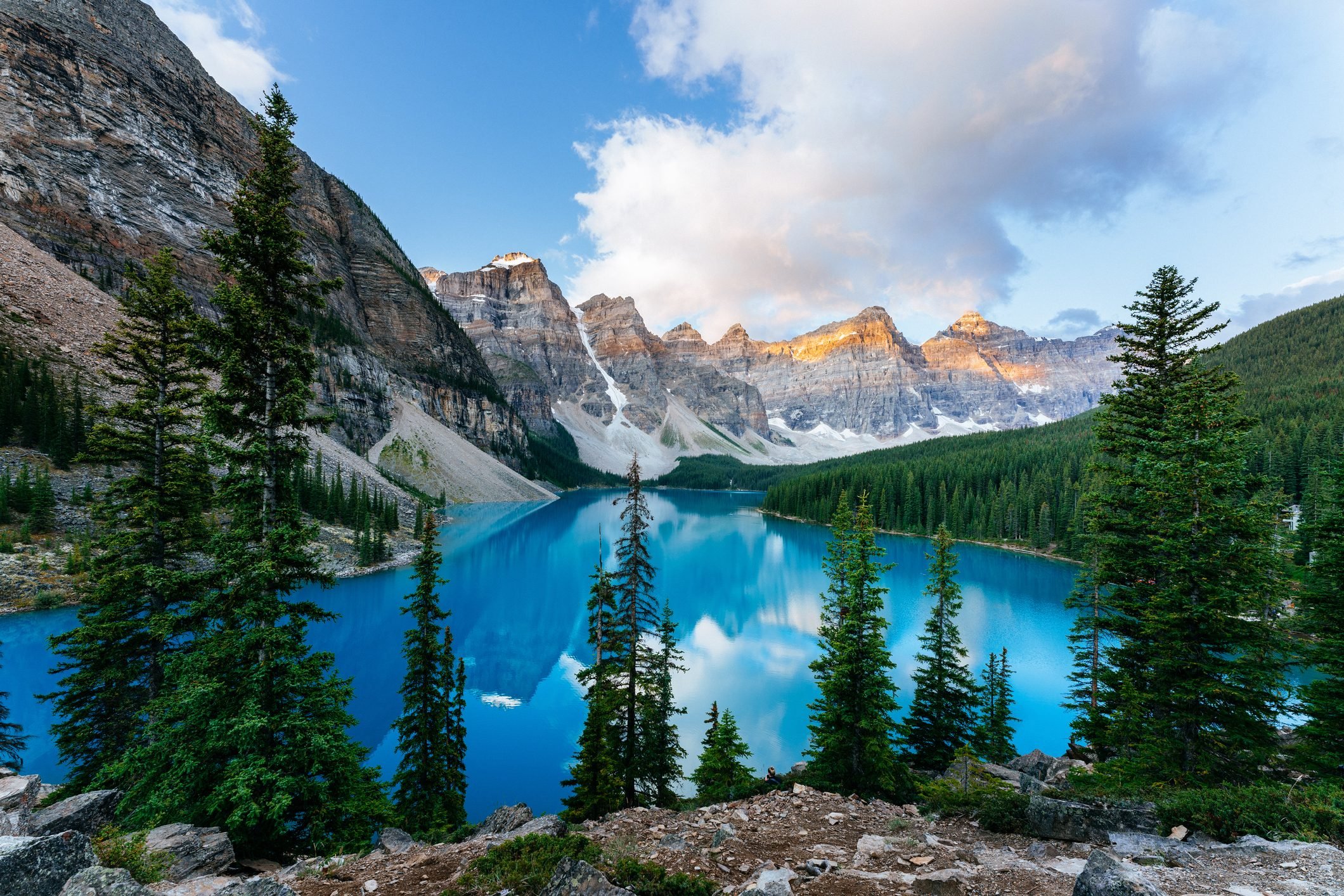
Moraine Lake
Location: Canada
Canada is renowned for its lovely lakes, as the country’s alpine locales lend themselves to the creation of crystal-clear mountain waters. Lake Louise in Banff National Park in the province of Alberta is perhaps the most popular, and it’s “clearly” (pun intended) gorgeous.
But our pick is the nearby Moraine Lake, a glacier-fed body of water with a transparent blue hue nestled in the Valley of the Ten Peaks. The lake’s color changes depending on where you view it from, the time of day and even the time of year—summer provides the brightest hue. The lake is so stunning that it was even featured on the Canadian $20 bill in the 1970s.

Five Flower Lake
Location: China
This lake in Jiuzhaigou National Park in southwest China sometimes acts like a mirror to reflect the surrounding landscape, which is particularly awe-inspiring in the fall. So it’s no wonder that Five Flower Lake has a mythical history: A goddess is said to have dropped her mirror, which shattered into many pieces that formed the lakes of the park, including this one.
This crystal-clear lake also provides a view right down to the fallen tree trunks at the bottom of its 16-foot depth, with varied, vibrant colors seeming to rise up from below. For the local people, this is a sacred lake; another legend says that wherever water from the lake is sprinkled, abundant flowers will grow.

Lake Baikal
Location: Russia
You may not have even heard of it, but this Siberian lake is the oldest, largest and deepest freshwater lake in the world. At a mile deep, it holds 20% of the Earth’s freshwater, which melts into the lake from the Siberian mountains. But besides its massive size, Lake Baikal is also one of the most crystal-clear lakes on the planet, with depths visible up to 130 feet!
“The water of Lake Baikal is the color of turquoise, more transparent than the Black Sea,” wrote Russian playwright and short story master Anton Chekhov in a letter from the late 1800s. “I myself have seen to such a depth, with rocks and mountains plunged in the turquoise-blue, that it sent a shiver all over me. … I shall never forget it as long as I live.”

Plitvice Lakes National Park
Location: Croatia
Like something out of paradise, the water of these cascading lakes flows over a series of waterfalls , lending an even more magical quality to the place. The lakes were formed as deposits of tufa—a type of stone similar to travertine—built up along a river, creating natural dams that led to the formation of the lakes.
Sixteen of these stunning, crystal-clear lakes are named, but there are many other smaller pools as well. Add in underground caves, moss-covered rocks and verdant forests, and the enchanting Plitvice Lakes look like they belong in a fairy tale.
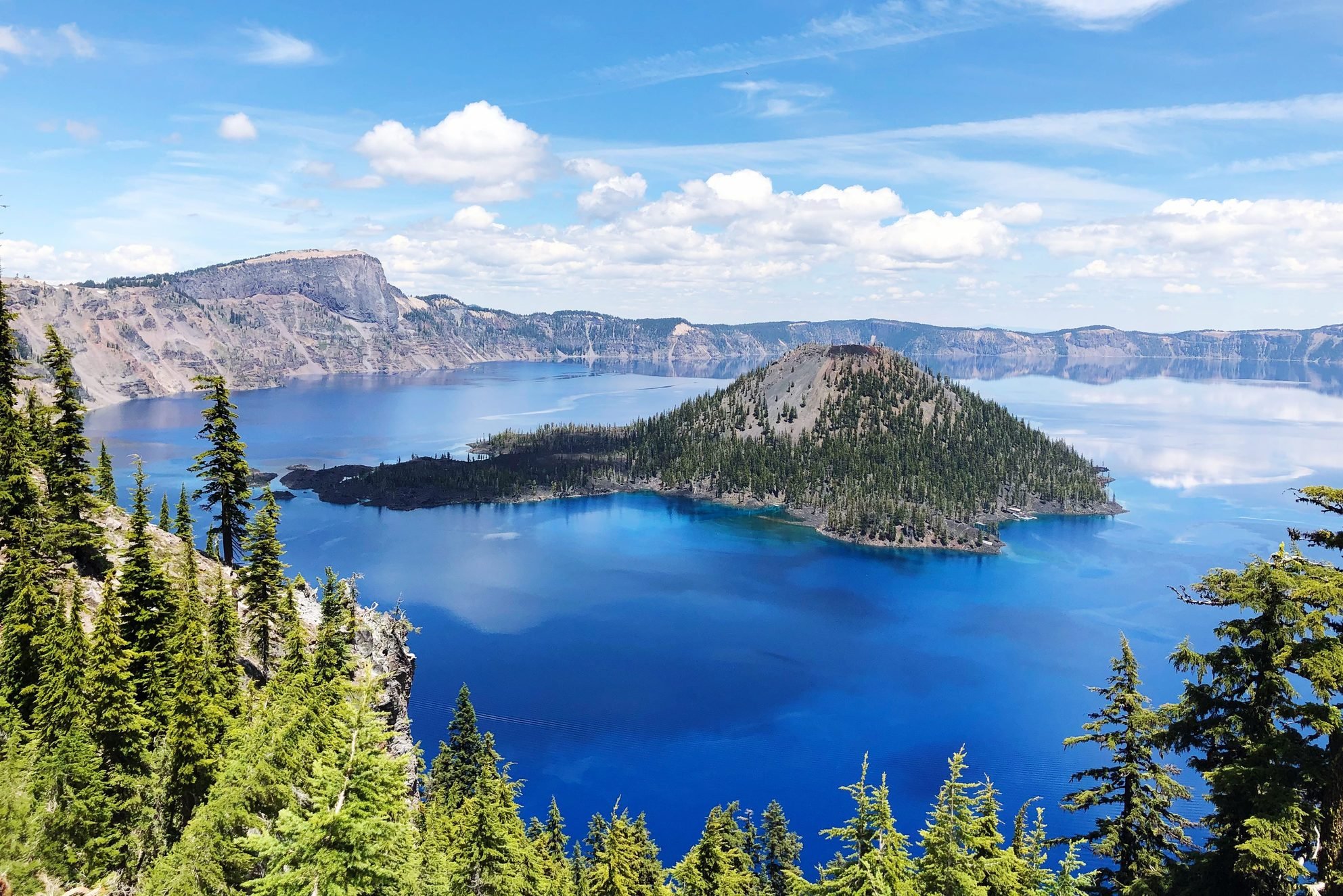
Crater Lake
Location: Oregon
The deep blue waters of this lake reflect the mountains that ring the crater’s edge. It’s the deepest lake in the United States and was formed over 7,000 years ago when an eruption caused a volcano to collapse in on itself, creating a “caldera.” Noted by the National Park Service as one of the clearest lakes in the world, Crater Lake has no incoming streams to bring sediment or minerals; it’s just water, fed solely by rain, snow and glacial springs.
The water is so pure in quality that the estimated visible depth is over 130 feet, making it one of the most crystal-clear lakes in the world. This remarkable body of water also has mystically named features, like Wizard Island, which is home to a crater called the Witches’ Cauldron, a small island of rock formations called Phantom Ship and the Old Man, a giant, upright hemlock log that’s been bobbing around the lake for over a century.

The Blue Lake
Location: New Zealand
This lake on New Zealand ‘s South Island is deemed one of the world’s must-see crystal-clear lakes. In 2011, scientists from the country’s National Institute of Water and Atmospheric Research conducted a study and found that the lake’s clarity is surpassed only by very clear seawater.
Also called Rotomairewhenau, Blue Lake is located in Nelson Lakes National Park. This body of water is actually fed by another glacial lake, Lake Constance. Both are free of run-off debris, which keeps the water clean and very cold. Its purity also makes the lake sacred to the local Indigenous people.
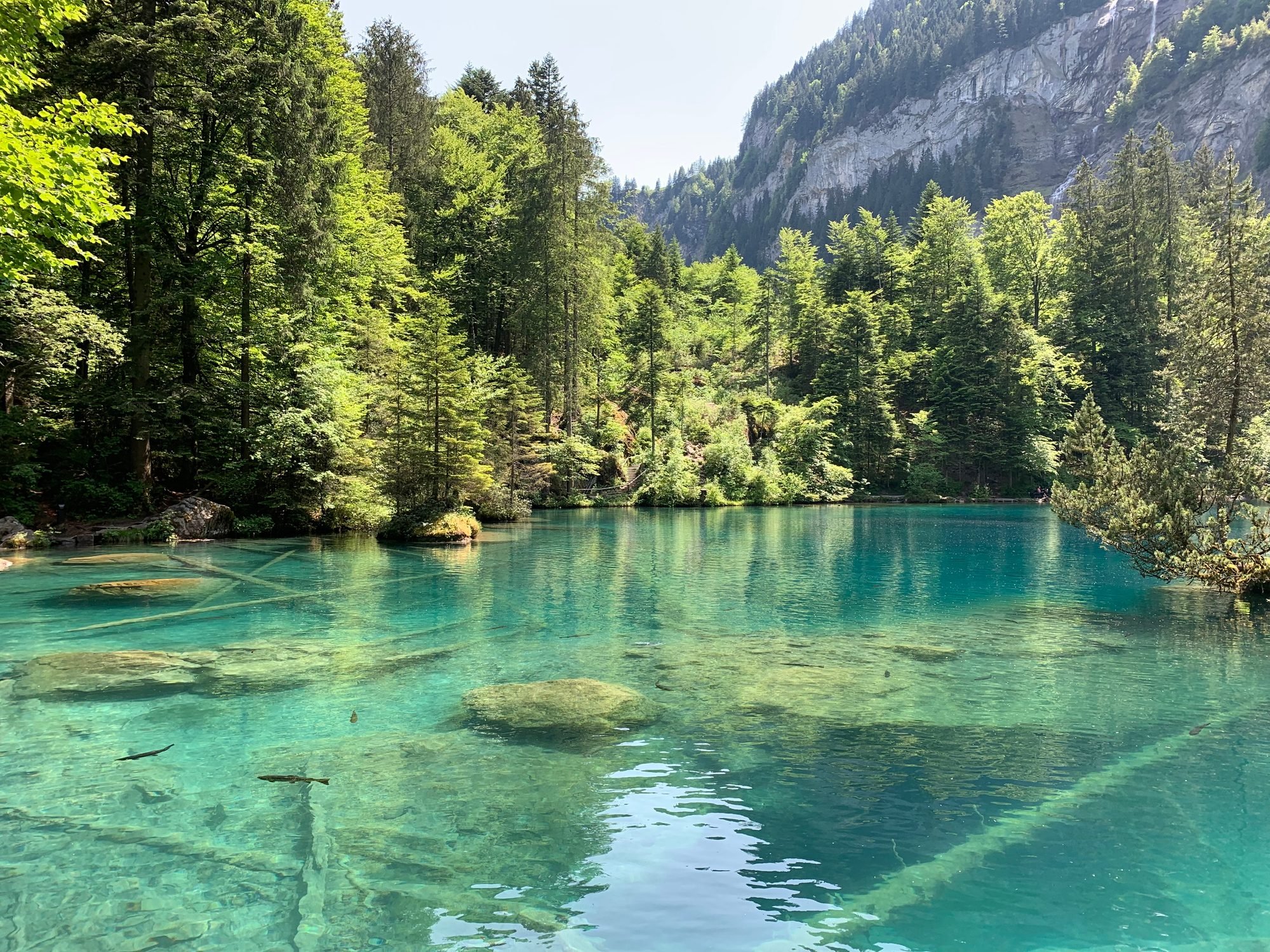
Lake Blausee
Location: Switzerland
Mountainous Switzerland is another country known for its abundance of crystal blue lakes, including Lucerne, Brienz and Oeschinen. We had a hard time choosing just one to add to our list but settled on the small yet striking Lake Blausee. Fed by underground springs, the lake is completely transparent, with a lovely blue-green color. Sunken tree trunks and boulders are visible all the way down to a depth of 40 feet below.
Lake Blausee is another lake seeped in legend: According to the tale, a broken-hearted, blue-eyed maiden drowned in the lake, and her tears turned the water its azure hue.

Dead Sea
Location: Israel and Jordan
Although it’s called a “sea,” this isn’t an ocean—it’s a saline lake surrounded by desert. With its extremely high salt content (five to nine times that of the ocean), the clear water of the Dead Sea is said to have medicinal properties. But because of its salinity, no fish can survive in it … hence its name.
This natural wonder has only one main source—the River Jordan—and the only way water gets out is through evaporation, during which its minerals are left behind. But although the lake is rich in these minerals, the water still retains its clear properties because there’s nothing else in it.
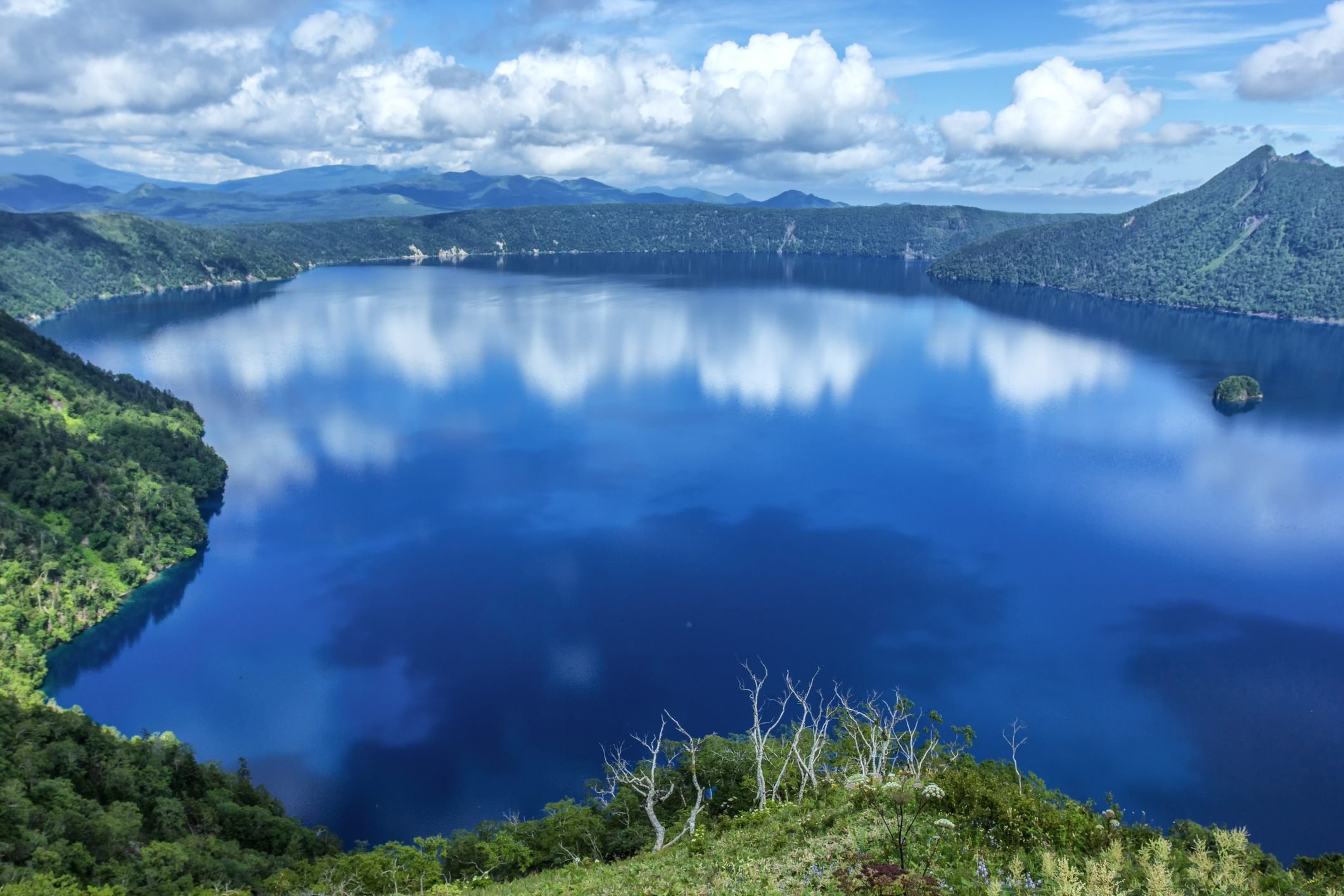
Lake Mashu
Location: Japan
Another caldera lake that formed from a volcanic eruption thousands of years ago, this bedazzling body of water on Japan’s island of Hokkaido is part of Akan-Mashu National Park. Called the “lake of the gods,” it is often covered in fog and mist—to see the surface of the water is said to bring bad luck from the spirit who lives in its depths. But when you can see it, the lake is crystal clear, with water visibility close to 100 feet because no rivers empty into it to deposit sediment and debris.
Nearby, Kaminoko-ike (“child of the gods”) Pond got its name because underground springs from Lake Mashu are believed to feed it, which is why the pond also has such transparent water.
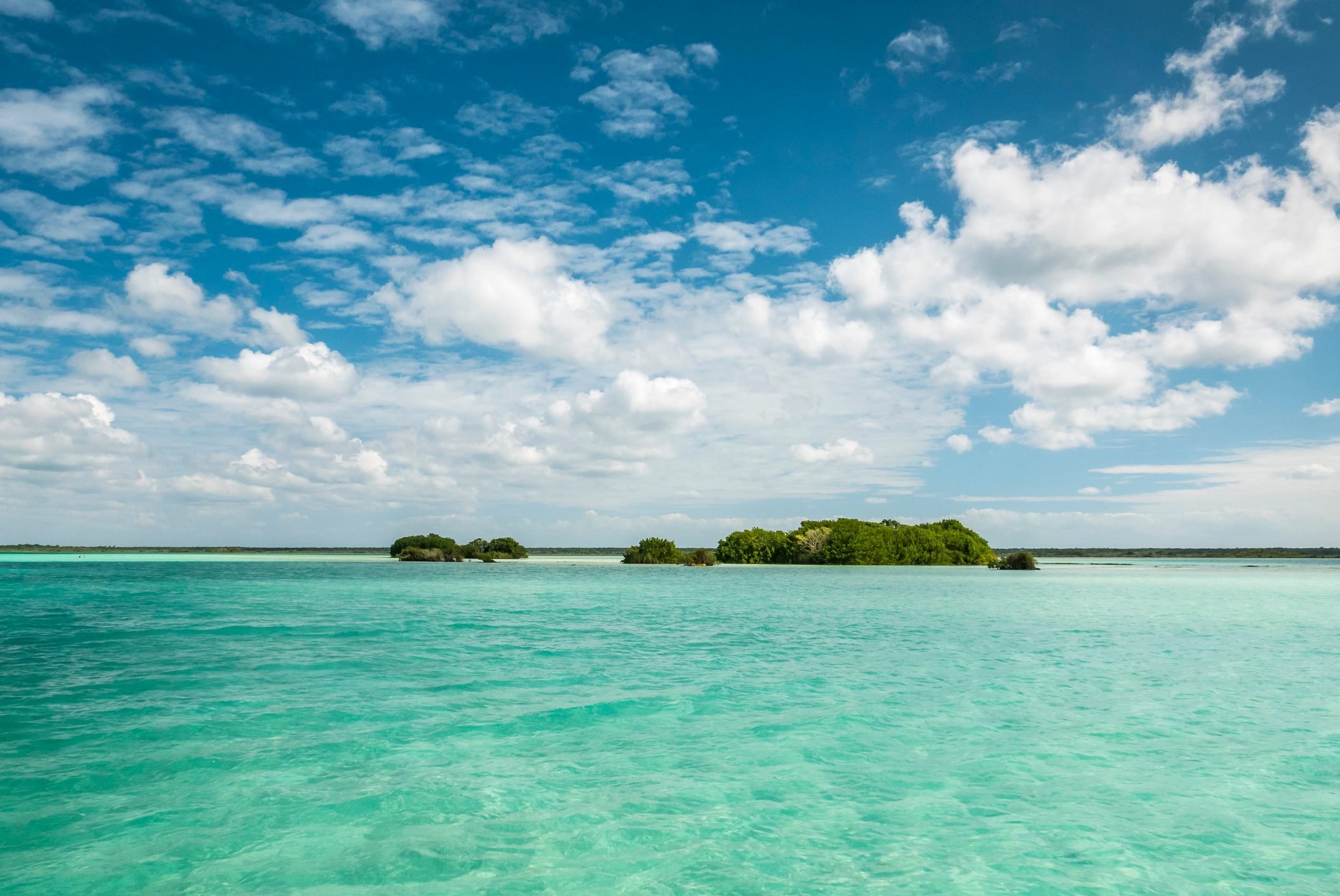
Lake Bacalar
Location: Mexico
Mexico has some gorgeous Caribbean water on its east coast, and Lake Bacalar looks like it’s part of it—with beaches, jungle and mangroves, it’s nearly impossible to tell the two locales apart. Yet Lake Bacalar has one big difference: It is actually a freshwater lagoon.
Located on the Yucatan peninsula near the Belize border, the lake sits inland from the sea, narrow and long at 26 miles. It’s fed by a series of underground rivers, and its white sand bottom allows the clear water to change color throughout the day, from turquoise to indigo, earning it the vibrant nickname the “lake of seven colors.”
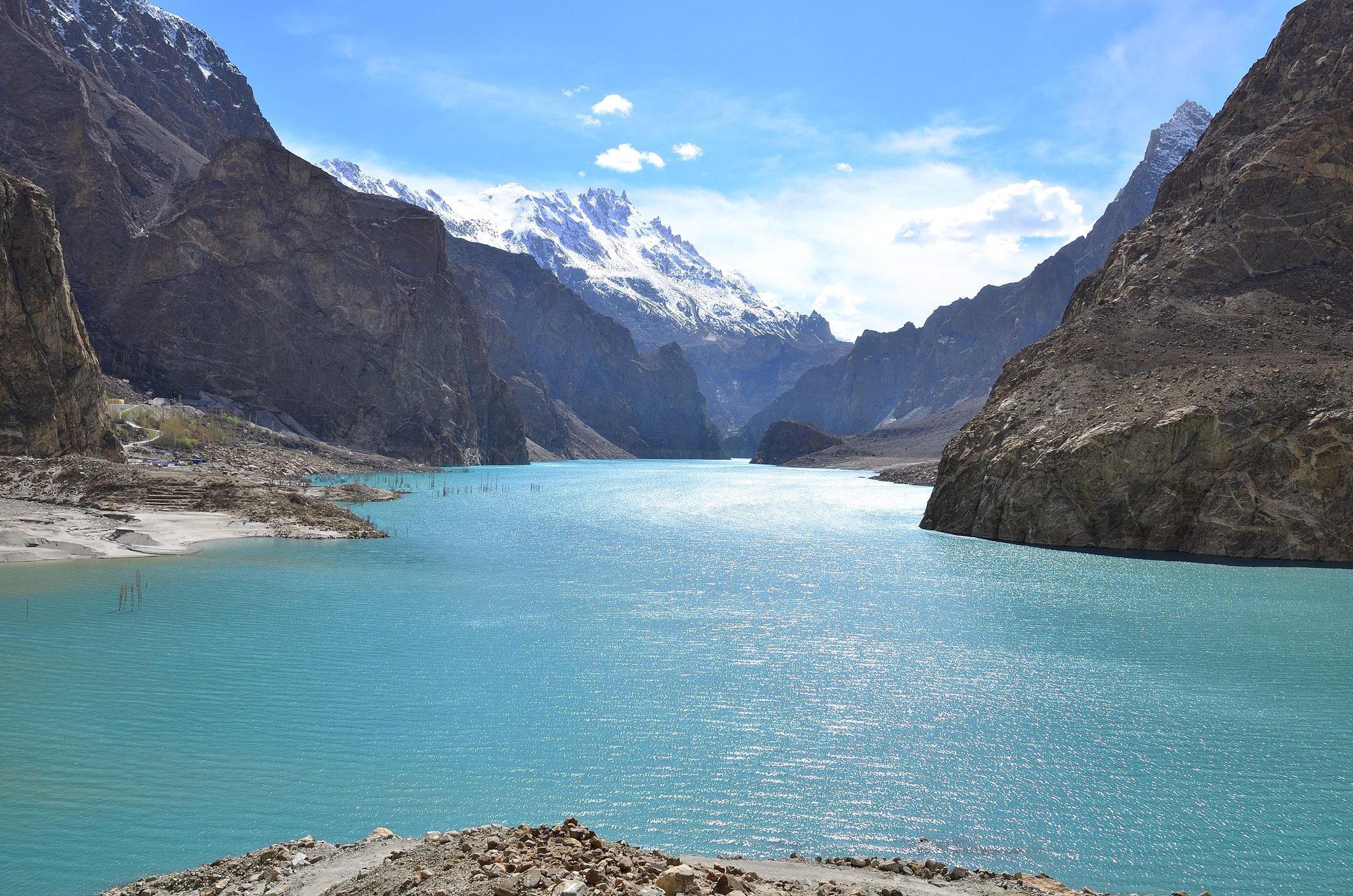
Attabad Lake
Location: Pakistan
This newly formed lake is somewhat of a silver lining to a major tragedy. In 2010, a landslide in northern Pakistan tumbled over the village of Attabad, leveling homes and killing 26 people. But the disaster also created a natural dam for the Hunza River, which led to a brand-new body of water.
Although some people had to move when the lake was formed, it’s now one of the most beautiful spots in the region and an attraction in itself. Like other glacier-fed lakes, the crystalline Attabad gains a spectacular bright blue color in spring and summer when the glaciers melt.
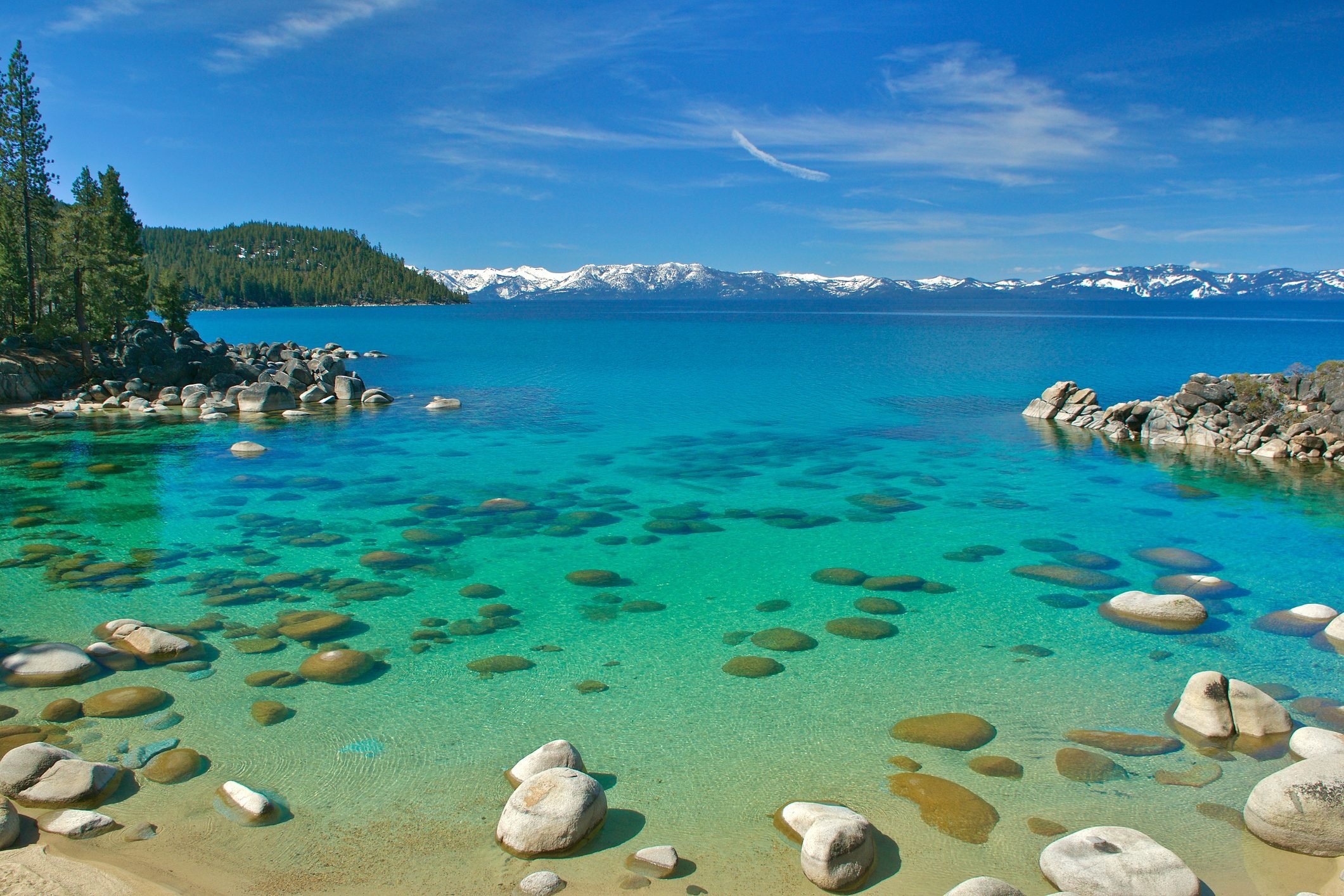
Lake Tahoe
Location: California and Nevada
This playground of the rich and famous has some exquisite natural scenery, including its sparkling waters. Straddling two states, Lake Tahoe is the second deepest lake in the United States, after Crater Lake, and its locale in the Sierra Nevada Mountains provides it with clear, pure waters that often appear bright cobalt blue.
Research by the University of California–Davis found that the striking color of the lake is not actually correlated with clarity but rather with the level of algae present (the lower the algae content, the bluer the lake). This could have implications for conserving the lake’s ecosystem and beauty.
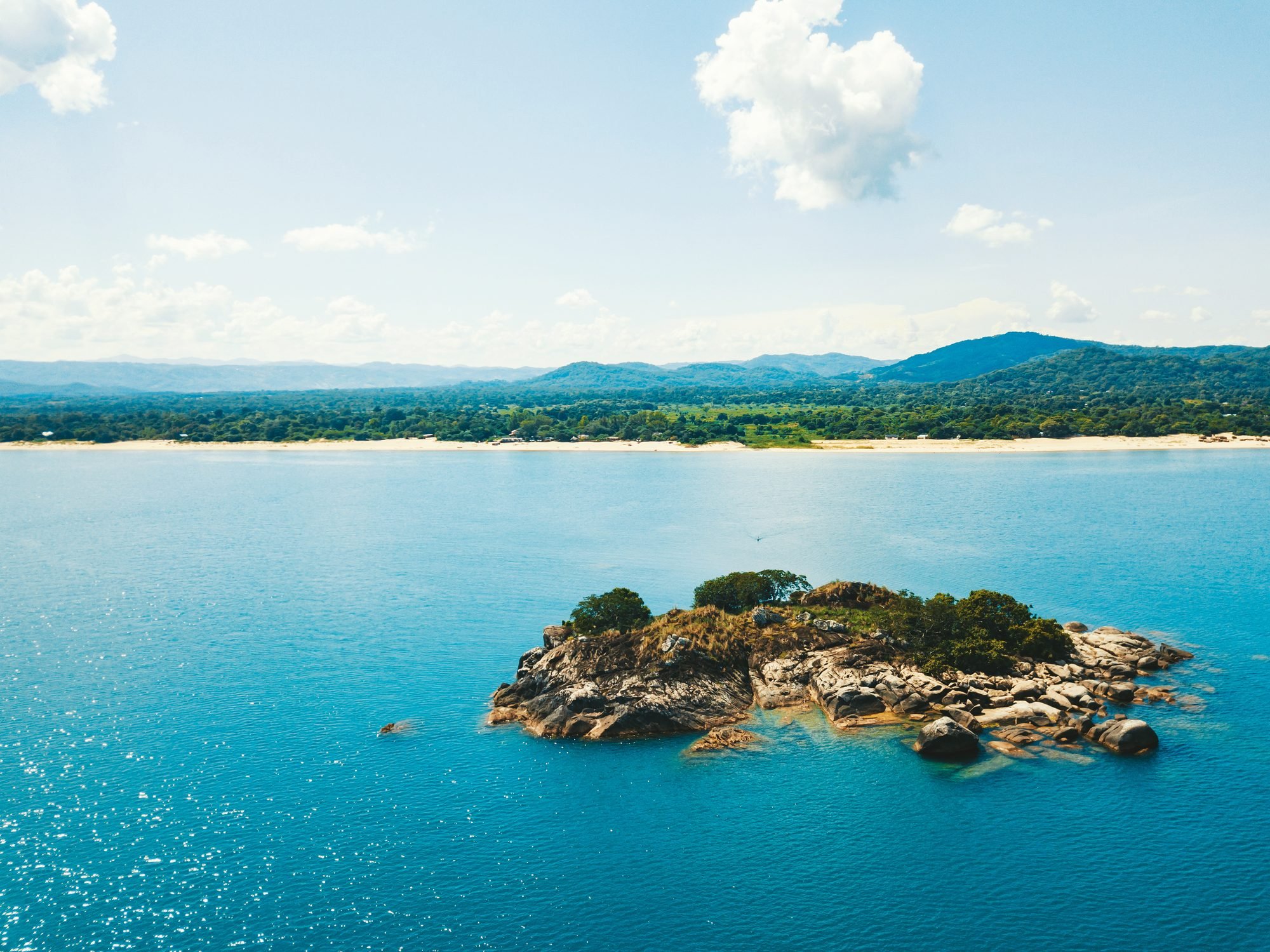
Lake Malawi
Location: Malawi, Mozambique and Tanzania
Running along much of the small African country of Malawi’s eastern border with Mozambique and Tanzania, this large, deep lake is “meromictic.” This means the layers of the lake don’t intermix, so all the sediment stays on the bottom, and the top appears totally transparent.
But unlike some other crystal-clear lakes, this one supports a huge endemic fish population, many species of which aren’t found anywhere else on Earth. Because of this, the lake is an important conservation site, not just to keep the water clarity at its most pristine but also to protect the abundant wildlife and biodiversity within.
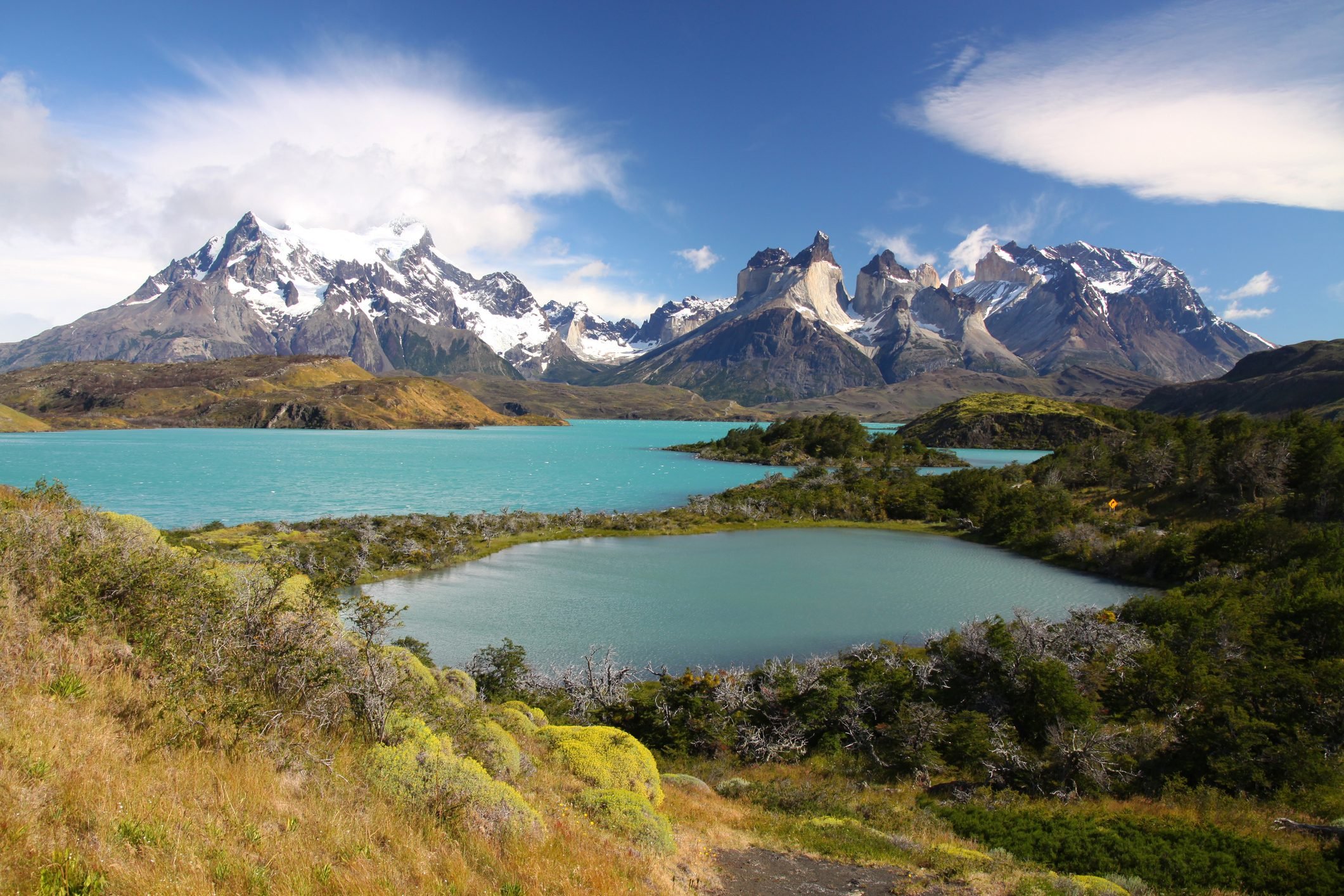
Pehoé Lake
Location: Chile
This luminous lake in remote Patagonia, in southern Chile, often reflects the spiky mountains called Cuernos (“horns”) del Paine that surround it in Torres del Paine National Park. Fed by glacial waters, the lake has brilliant colors of all shades that seem to change throughout the day as the light shifts—aside from hues of turquoise and blue, shades of lavender and even orange may appear.
In addition to the water’s shimmering beauty and the majestic peaks towering over it, the area around the lake is home to some of South America’s most interesting wildlife, including the guanaco, a “camelid” that resembles a llama or alpaca.
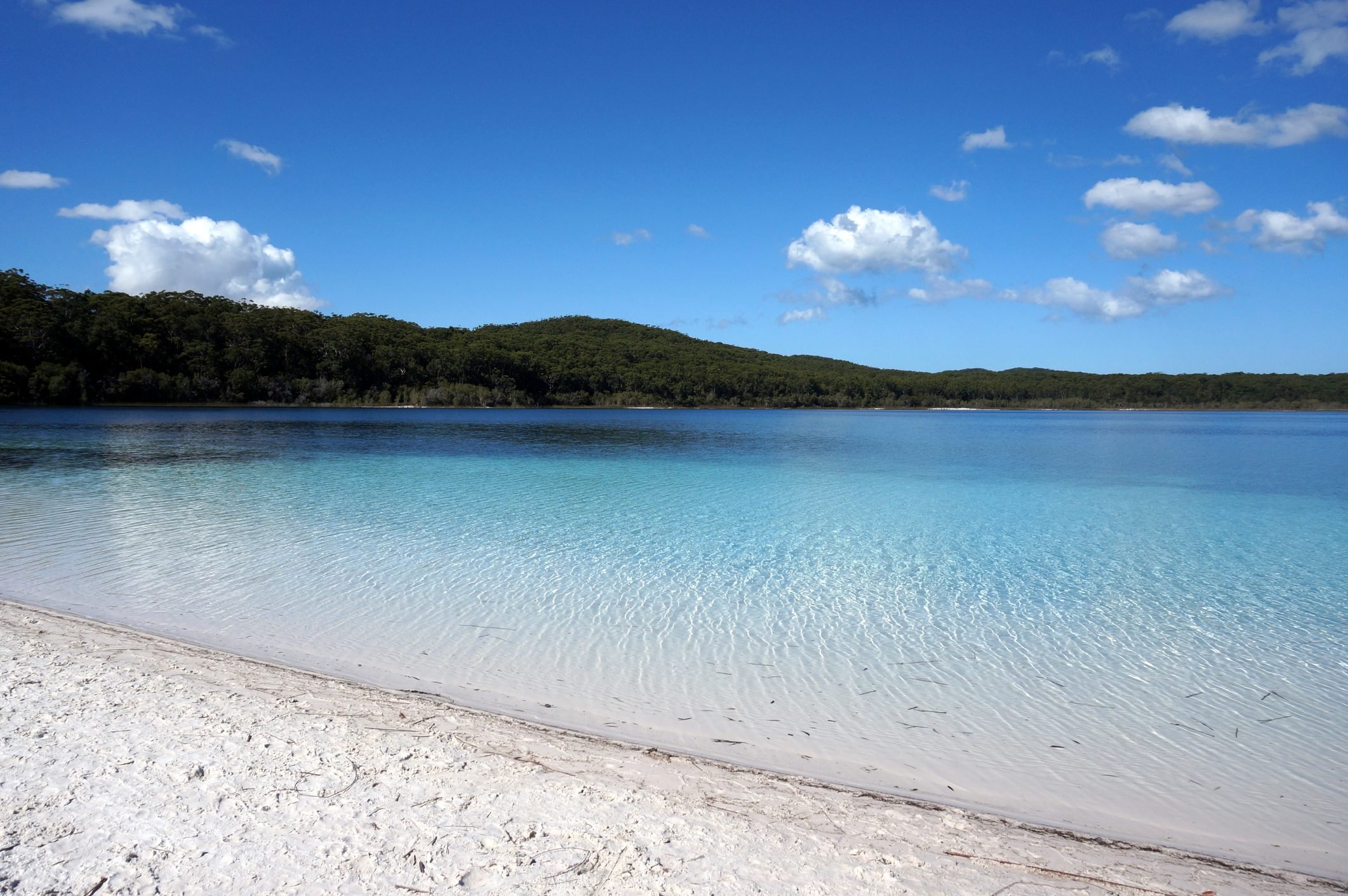
Lake McKenzie
Location: Australia
Located on Fraser Island in Queensland, this crystal clear lake looks like something from the nearby ocean coast . Rimmed with white sand beaches, the lake owes its purity to its geography: Fraser’s Island is the world’s largest “sand island,” and it also has half the world’s “perched lakes,” sand dune depressions filled entirely with rainwater, including Lake McKenzie.
The lake has no rivers that feed it, nor does it drain into the ocean. The purity of the lake means that no fish can live in it, so the water remains glittering blue all the time.
Why trust us
Reader’s Digest has published hundreds of travel stories that help readers explore the world safely, easily and affordably. We regularly cover topics such as the best places to visit (and the best times to visit them), tips and tricks to zoom through airport security, flight-attendant secrets, hotel-room hacks and more. We’re committed to producing high-quality content by writers with expertise and experience in their field in consultation with relevant, qualified experts. We rely on reputable primary sources, including government and professional organizations and academic institutions as well as our writers’ personal experiences where appropriate. We verify all facts and data, back them with credible sourcing and revisit them over time to ensure they remain accurate and up to date. Read more about our team , our contributors and our editorial policies .
Sources:
- Parks Canada : “Lake Louise and Moraine Lake”
- Global Alliance of National Parks : “Jiuzhaigou National Park”
- Travel China Guide : “Five Flower Lake, Jiuzhaigou”
- Plitvice Lakes National Park
- National Park Service : “Crater Lake – National Park Oregon”
- Nelson Regional Development Agency : “Rotomairewhenua (Blue Lake)”
- National Institute of Water and Atmospheric Research : “NELSON MAIL: Blue Lake a New Zealand treasure”
- Switzerland Tourism : “Blausee”
- Japan National Tourism Organization : “Kaminoko-ike Pond”
- BBC : “Japan’s mysterious ‘lake of the gods’”
- Travel Yucatan : “Top 6 Reasons Why You Should Visit Bacalar”
- Gilgit-Baltistan Tourism Department : “Attabad Lake”
- University of California, Davis : “Keep Tahoe blue? Less algae, not clarity, key factor for blueness”
- Smithsonian Magazine : “The Fishy Mystery of Lake Malawi”
- UNESCO World Heritage Convention : “Lake Malawi National Park”
- TorresDelPaine.com : “Pehoé Lake”
- Tourism Australia : “Guide to K’gari”

